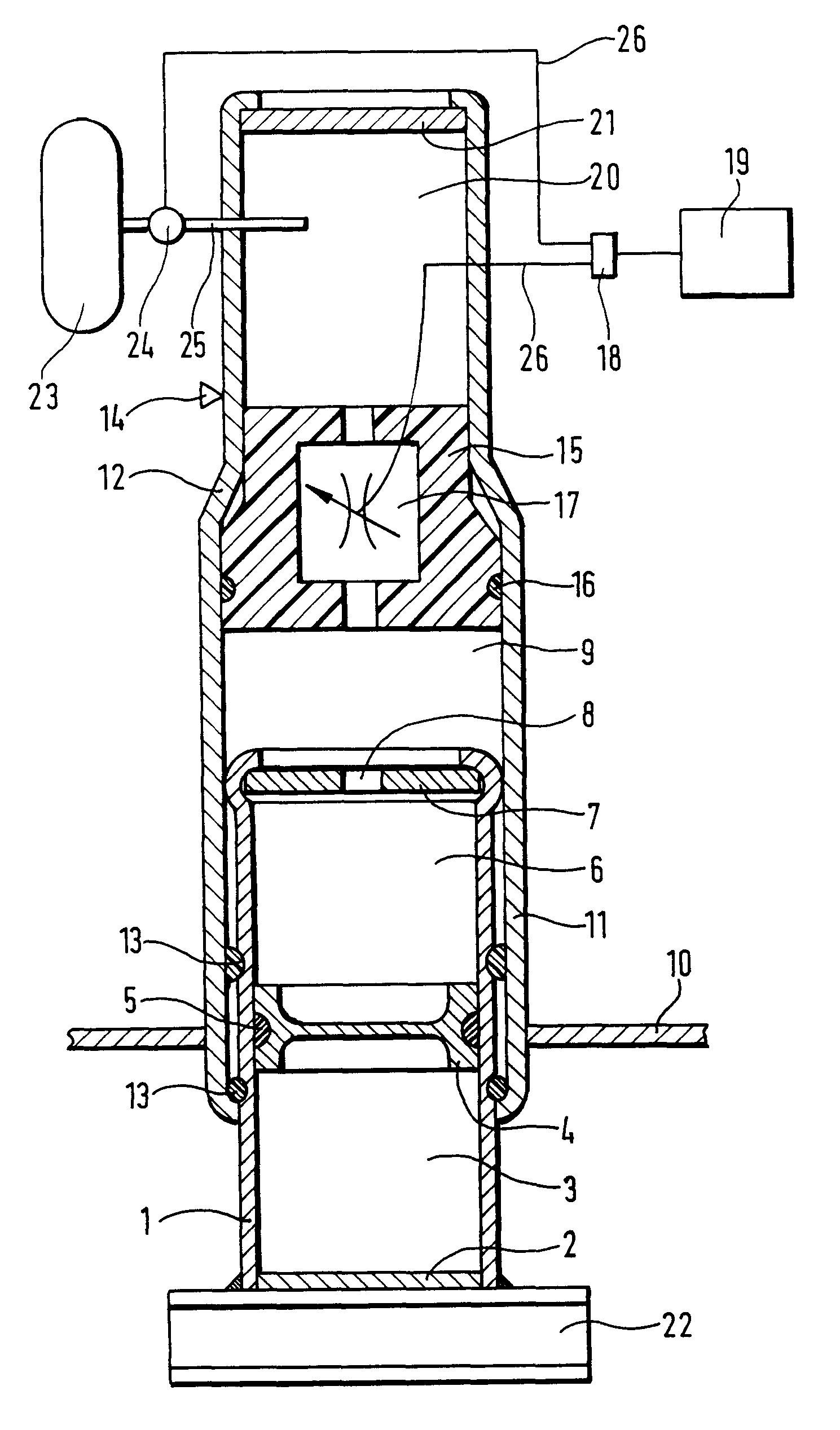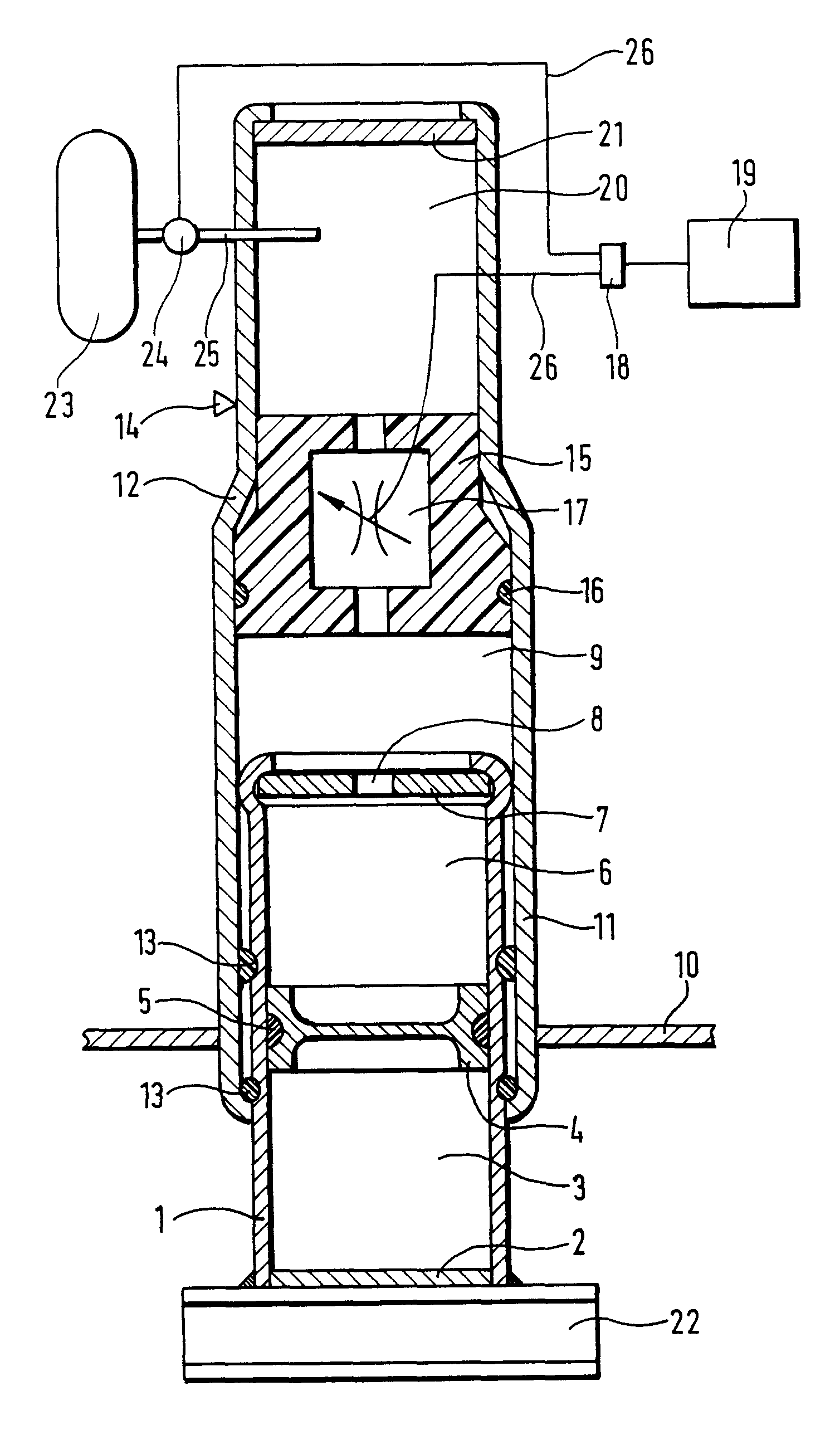Impact damper
a technology of impact damper and spherical damper, which is applied in vibration dampers, mechanical equipment, transportation and packaging, etc., can solve the problems of increasing the cost of the device, increasing the pressure, and reducing the size of the first gas spa
- Summary
- Abstract
- Description
- Claims
- Application Information
AI Technical Summary
Benefits of technology
Problems solved by technology
Method used
Image
Examples
Embodiment Construction
The FIGURE shows a variable-length impact damper for a chassis of a motor vehicle, an inner tube 1, closed off from the outside by a wall 2, enclosing a first gas space 3, which is provided with a gas charge under high pressure. Connected to the wall 2 and / or the inner tube 1 is a fastening element 22, which connects the impact damper to a bumper. A first liquid space 6, which is likewise situated in the inner tube, is separated from the first gas space 3 by a dividing piston 4, which is sealed off by means of a sealing ring 5 and slides on the inner wall of the inner tube 1. At the opposite end from the dividing piston 4, the first liquid space 6 is bounded by a partition wall 7, which is secured in the inner tube 1 and is provided with a restriction orifice 8 and hence establishes a hydraulic connection with a second liquid space 9, which is likewise arranged in the inner tube 1. The inner tube 1 slides on the inner wall of an outer tube 11 and is sealed off by at least one sealin...
PUM
 Login to View More
Login to View More Abstract
Description
Claims
Application Information
 Login to View More
Login to View More - R&D
- Intellectual Property
- Life Sciences
- Materials
- Tech Scout
- Unparalleled Data Quality
- Higher Quality Content
- 60% Fewer Hallucinations
Browse by: Latest US Patents, China's latest patents, Technical Efficacy Thesaurus, Application Domain, Technology Topic, Popular Technical Reports.
© 2025 PatSnap. All rights reserved.Legal|Privacy policy|Modern Slavery Act Transparency Statement|Sitemap|About US| Contact US: help@patsnap.com


